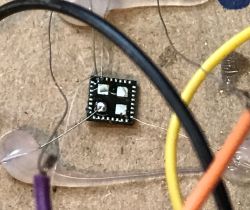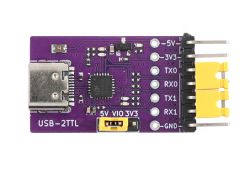FAQ
TL;DR: Most CB2S/BK7231N smart-switches draw just 60-80 mA at 5 V (“0.4 W in active mode” [Elektroda, p.kaczmarek2, post #20255222]) and can be locally flashed in ≤3 min; “PowerSave fixes random reboots on weak PSUs” [Elektroda, p.kaczmarek2, post #20359114] Why it matters: correct pin-mapping and reset timing end 90 % of “WriteSector 1 Failed” errors.
Quick Facts
• Default flash layout: 0x0 offset, 2 MB total [Elektroda, piratee, post #20546731]
• Stable current draw: 60–80 mA @5 V, 0.4 W [Elektroda, p.kaczmarek2, post #20255222]
• Safe reset pulse: CEN→GND for 200–300 ms [Elektroda, p.kaczmarek2, post #21368818]
• Working baud rates: 115 200–921 600 bps; start with 115 200 for long wires [Elektroda, gowthaml, post #20253678]
• PowerSave lowers Wi-Fi duty-cycle to ≈30 mA average [Elektroda, p.kaczmarek2, post #20359114]
How do I put a CB2S/BK7231N into flash mode?
- Solder RX1 (P11), TX1 (P10), 3.3 V and GND; leave RX2/TX2 empty. 2. Run uartprogram, wait for “Getting bus…”. 3. Short CEN to GND for ~250 ms, then release. The tool shows “Gotten bus” when the chip is ready [Elektroda, piratee, post #20546731]
I get “WriteSector 1 Failed”. What fixes it?
Mismatched pins are the top cause. Many new CB2S boards silkscreen RX1/TX1 one pad down—verify with a multimeter [Elektroda, p.kaczmarek2, post #21368818] Also drop baud to 115 200 bps and keep wire length under 15 cm [Elektroda, gowthaml, post #20253678]
Which firmware type should I flash?
• BK7231 N → QIO binary at 0x0. • BK7231 T → UA binary at factory offset. Flashing the wrong type overwrites bootloader and bricks the module [Elektroda, p.kaczmarek2, post #20200373]
Can I power the module from the USB-TTL adapter?
Only for reading. Writes peak above 150 mA; most adapters sag and corrupt transfers. Feed 5 V to the board’s AMS1117 VIN or 3.3 V from a 300 mA LDO instead [Elektroda, p.kaczmarek2, post #20202405]
Device reboots after a minute—why?
Low-cost PSUs overheat at 0.4 W continuous. Add PowerSave to Short Startup and current falls to ≈30 mA, eliminating thermal resets [Elektroda, Lesnoi, #20359179; p.kaczmarek2, #20359114].
How do I map pins on a MK601 relay board?
Typical mapping: P26 → LED, P6 → Relay, P7 → Btn, P10 → Btn_n (S2). For a latch switch use role TglChanOnTgl on P10 [Elektroda, spin55, post #20357749]
Why does Wi-Fi connect to SSID 1 but not SSID 2?
Secondary SSID fields are placeholder in current builds; only the first network is active [Elektroda, p.kaczmarek2, post #20964802]
How can I read Tuya-MCU sensors like DHT11 with OpenBeken?
Set the pin role to DHT11 or DHT22. OBK exposes temperature on Channel 1 and humidity on Channel 2. Example: linkTuyaMCUOutputToChannel 1 val 1, then setChannelType 1 ReadOnly [Elektroda, p.kaczmarek2, post #20359448]
Edge case: two devices share the same MAC and vanish from LAN.
Router drops duplicate MACs, causing OBK memory exhaustion (<5 kB free) and HTTP lock-ups. Run Restore RF Config to generate a new unique MAC [Elektroda, p.kaczmarek2, post #20334753]
Quick 3-step OTA recovery after bad flash?
- Power-cycle the unit 5 times to enter Safe Mode. 2. Connect to the temporary AP, open 192.168.4.1/app, press “Exit Safe Mode”. 3. Upload a known-good QIO binary via Web Upgrader [Elektroda, p.kaczmarek2, post #20334576]
Does OpenBeken support DS18B20?
Not yet. Current sensor driver set covers DHT11/21/22 and CHT8305. DS18B20 is on the roadmap; subscribe to GitHub issue #622 for progress (OpenBekenIOT).
Where can I download original Tuya firmware?
There is no public archive. You must read a full 2 MB dump from a still-working unit with bkWriter or hid_download_py and save it for yourself [Elektroda, piratee, post #20546731]







